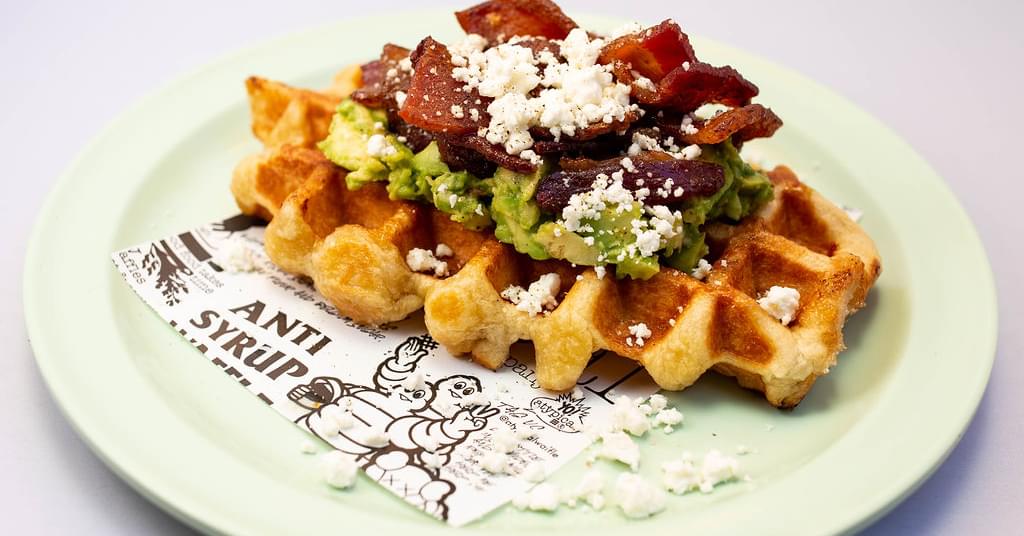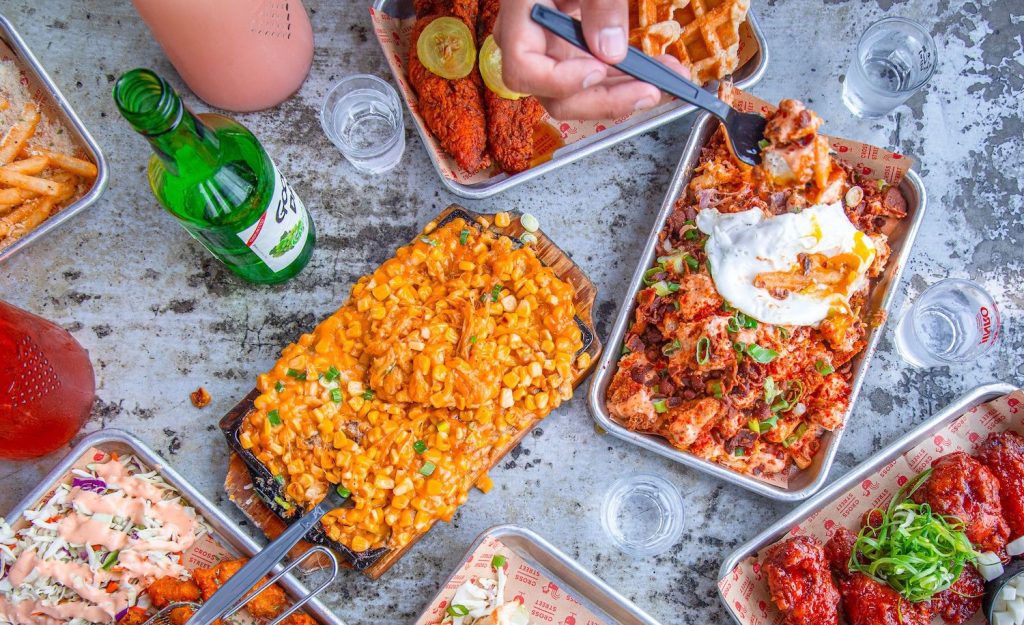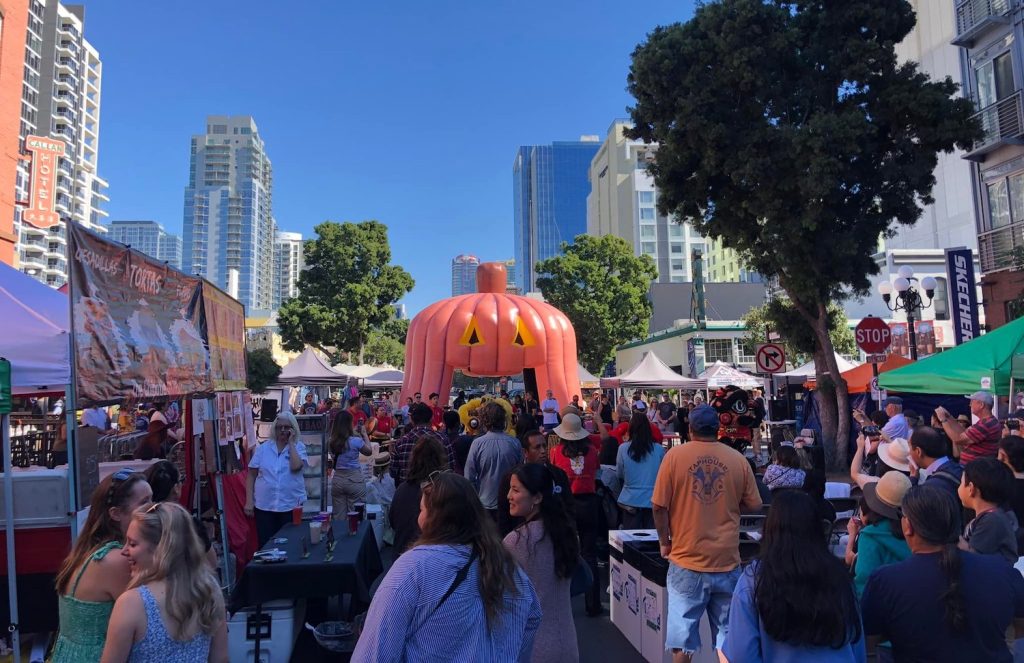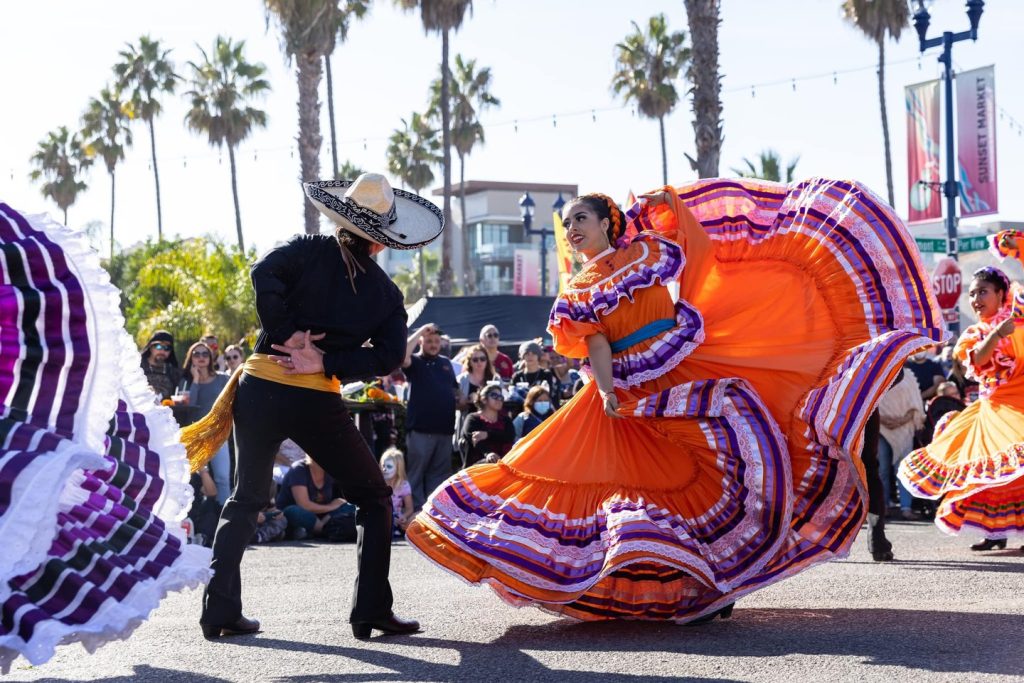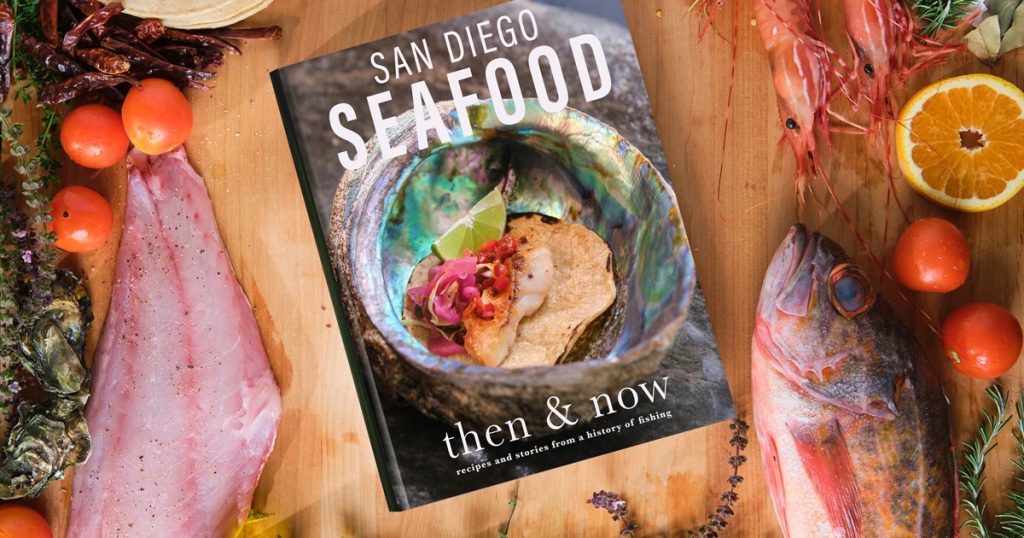
Marisi spread
Photo Credit: James Tran
America’s love affair with wallpaper has reached a lusty pitch. We’re gift-wrapping walls now with a zeal not seen since the 1920s when it seemed Victorian OBGYNs were catching newborns in the stuff. And the new wallpaper vanguard is not subtle. The wilder and clashier, the better. I’m all for it. Seemed like the last decade of restaurant design was abandoned-building minimalism.
The city’s best chefs were serving meals in rooms of slab concrete where the only design flourishes were stalactites of old carpet glue as we stared at crumbly brick walls surrounded by a Pittsburgh amount of steel. The whol scene seemed destined to peak one day when we’d find ourselves eating trendy Michelin food while sitting cross-legged on a pile of rebar.
I still enjoy that no-frills brutalism, but I’m also ready for visual riots. Something interesting, delicate, pretty.
Marisi in La Jolla is all those things. There seem to be six or seven different patterns, elbowing one another in a sort of atelier mosh pit. Moroccan tile runs into fruit-fetish wallpaper, and so on. The off-menu item that’s included with every meal or drink is increased sex appeal; humans look more tantalizing sitting here.
The main show is the high-ceilinged patio out front that’s always cast in hazy half light. With long strands of bougainvillea dangling from the rafters high above, it’s a terrarium of diners (all of whom seem to have fantastic skincare routines, their epidermises nearly liquid) sitting in soft-cloth booths of various pastels.

Like a more-ethical beauty filter, Marisi’s lush surrounds and aurous lighting lend diners a hint of boosted sex appeal.
Photo Credit: James Tran

The restaurant brews brine for its dirty martini with odds and ends from the kitchen, including milled tomatoes, mushroom jus, and parmesan rinds.
Photo Credit: James Tran
In the middle of that patio is a barrel. Get to know its insides. That’s private select Weller full proof (William Larue Weller was one of the bourbon originals, using wheat instead of rye, and he taught his employee, Julian “Pappy” Van Winkle, how to master the stuff). It’s ambitious, terrific liquid.
Ambition is in the air at Marisi—a serious stab at a rarefied, scratch-pasta trattoria from the family that created Puesto. (Brothers Eric, Alex, and Alan Adler, plus cousins Moy and Isi Lombrozo all grew up in the neighborhood—and opened their first Puesto next door.)
For the bar, the family pulled Beau du Bois from Meadowood, one of the best restaurants on the planet. Someone should paint him. He is tanned and chiseled, almost seems created by AI. He is also an encyclopedia of booze, and stashed above the semi-circular bar and along the walls are his various bottles of treats—amaros and bourbons for days. He makes his own limoncello, a personal crusade to rescue the Italian liqueur from the reputational slander of store-bought brands. His limoncello is a revelation in comparison. The house favorite cocktail is the gin and tonic, which adds white port to the classic. Port tonics are a Portugal pre-meal standard, the subtle sweet dessert wine balancing the tonic’s bitterness.

A world away from the dimpled, pizza-esque flatbread most of us know, Marisi’s focaccia arrives as a buttery, cloudlike boule. Use it to soak up the beef carpaccio’s generous toppings.
Photo Credit: James Tran
Inside Marisi, the kitchen is so “open” that it’s part of the dining room. Only difference is the team of chefs and the inferno of wood charring and smoking vegetables, meats, and snacks. There’s executive chef Chad Huff, analyzing and nitpicking dishes before they go out. Huff spent a couple of years as lead pasta chef for the renowned Felix Trattoria in Venice, then was executive chef for Malibu’s Broad Street Oyster Co. before Marisi lured him south.

Spirits VP Beau du Bois draws Weller full proof bourbon from the restaurant’s barrel of wheat-based liquid gold.
Photo Credit: James Tran
Upstairs, more chefs hover over a table in a cumuluslike huddle of flour, making fresh pasta. Nearby, they’re dry-aging fish in a temperature- and humidity-controlled chamber. If aging fish sounds somehow suspect, know that sushi only becomes that silky wonder-meat because it’s aged (the muscles straighten, becoming silky).
The Marisi experience starts with focaccia. This is not the focaccia you know. It arrives looking like a full cake, called a boule. Bread has just a few ingredients, the primary being flour. So the specialness of that flour is everything. Marisi’s is made with Red Fife flour from the Tehachapi Grain Project, a collaboration between one of California’s most respected farmers, Alex Weiser, and Anson Mills. The result is light, fluffy, buttery, salty, gorgeous. Pace yourself. Use it throughout your entire meal to scrape up sauces.
Honestly, don’t order the carpaccio without that bread. Because this is also not a traditional carpaccio. Snake River eye of round is coated with a paste of roasted garlic and anchovy, seared over the wood fire, then sliced paper-thin and spread across a very generous plate. The toppings are obscene for a thin-sliced beef dish—scallion salsa verde, pickled heirloom chiles, tufts of roasted pine nut puree, and horseradish. I ate it on its own; while delicious, the toppings were so abundant that it almost ate like a zingy-thick gazpacho. I’d love to see all those things in smaller doses. However, with the bread to balance out the toppings? Perfect.
Pasta is Marisi’s love language. The pasta itself is as good as expected under Huff, using the world’s best flour. It’s got that snap-chew, alive flavor of things made minutes ago. Get the pappardelle with Genovese duck ragu. It’s everything a dish should be at a pasta restaurant—simply good noodles, un-simple accompaniment (duck instead of beef, garnished with preserved Meyer lemon and Piave Vecchio DOP, a younger, slightly sweeter cheese that’s close to Parm-Reg).
Our three favorite dishes at Marisi are the squid, chicken, and fish. Basic dishes, done so well. The squid is from Monterrey, grilled instead of battered and fried (many US restaurants fry it because squid used to freak people out in the ’80s, and we’re slow to adapt). It’s tossed in a relish of preserved Jimmy Nardello peppers and Calabrian chiles with charred Romano beans and fingerling potatoes.

Lead line chef Taylor Houseman lays veggies out to char in the restaurant’s roaring wood-fire oven.
Photo Credit: James Tran
Always order the chicken to get a feel for a restaurant. Anyone can make duck or ribeye or lamb taste compelling. Chicken is the khaki pants of proteins, so a chef who can make it remarkable is doing good things. And Huff’s Jidori—a half-bird, deboned and marinated in citrus, chiles, and housemade shio koji (a Japanese flavor magic trick), then grilled over coastal oak and a demiglace— is a star.

Scratch-made pappardelle comes topped with tender duck ragu, preserved Meyer lemon, and Parmigiano-Reggiano relative Piave Vecchio DOP.
Photo Credit: James Tran
And finally, the line-caught fish of the day, which was halibut for us. Great fish, but at a restaurant like Marisi, the meaty wallflower is merely a supporting star of a sauce. Huff rests it on a delicious beurre blanc that’s mounted with capers and Taggiasca olives, topped with a salad of shaved fennel, charred dandelion greens, and a citrus blend of blanco grapefruit, cara cara (the sweetest of the oranges) and blood orange (more tart to counterpoint the sweet), and pickled kumquats.
We ordered the bone-in New York steak. Dry-aged for 60 days, it’s intensely delicious. (Dry-aging serves the same function of reducing a sauce—getting rid of excess moisture, making the best flavors get stronger and louder.) My only complaint is that the art of it doesn’t match the art of Marisi. It is steak on a white plate. I understand the instinct.
When you’ve got a carnivore treat of this caliber, this long in the making, the idea is to eat it as close to raw as possible. Don’t fuss it, don’t sauce-tarnish it. But throw it a garnish bone, a little color support. Rest it on a bed of charred asparagus, pierce it with rosemary spears, lower it onto the table on a bougainvillea vine, have servers carry it out on a palanquin, something.
As I sip my limoncello to digest the Italian way, I reckon that, with an abundance of talent in this wild-pretty place, such details will work themselves out.
